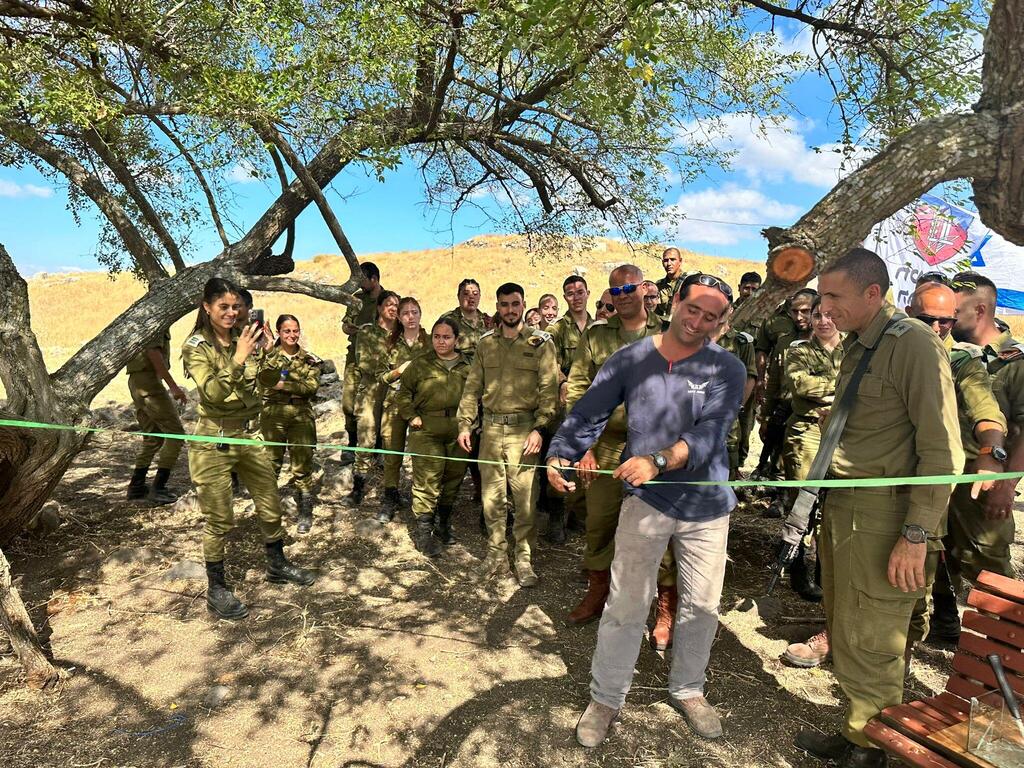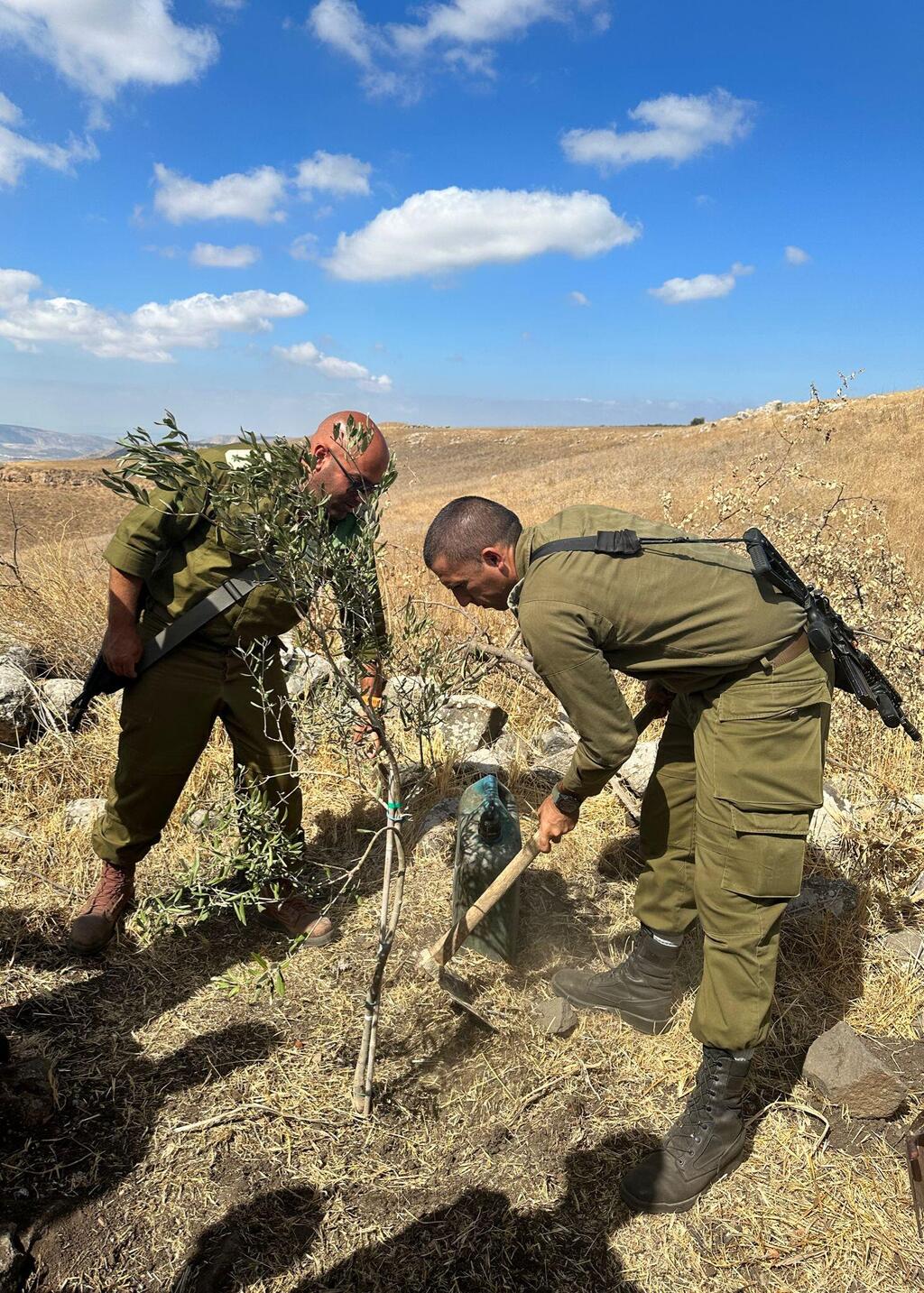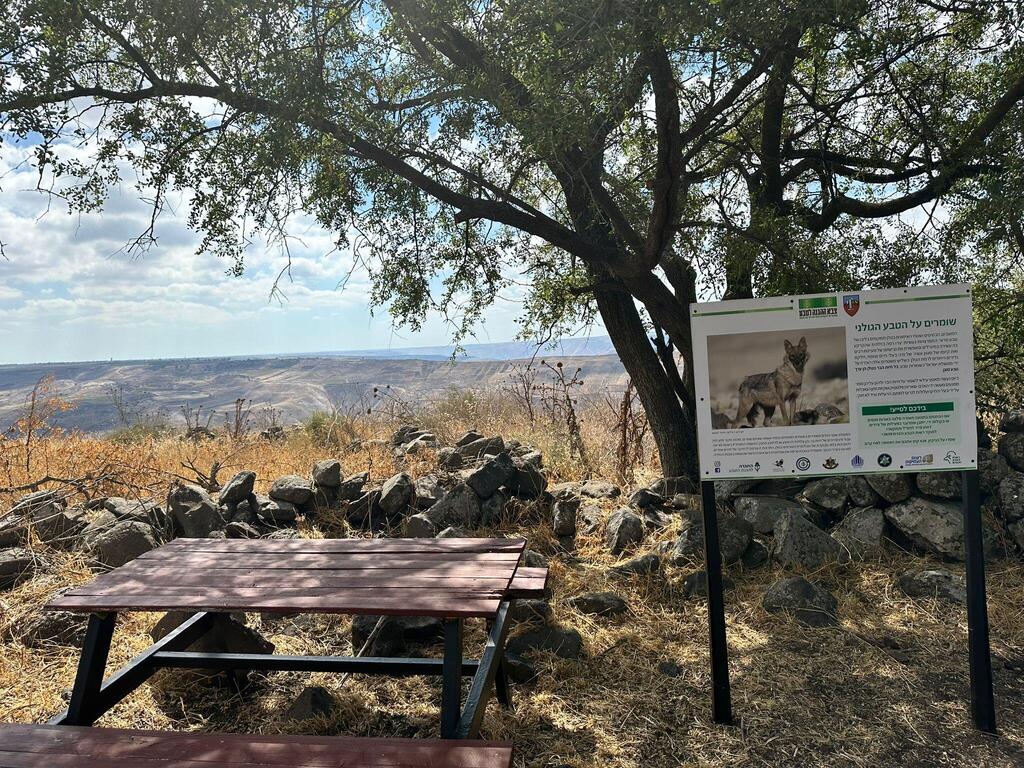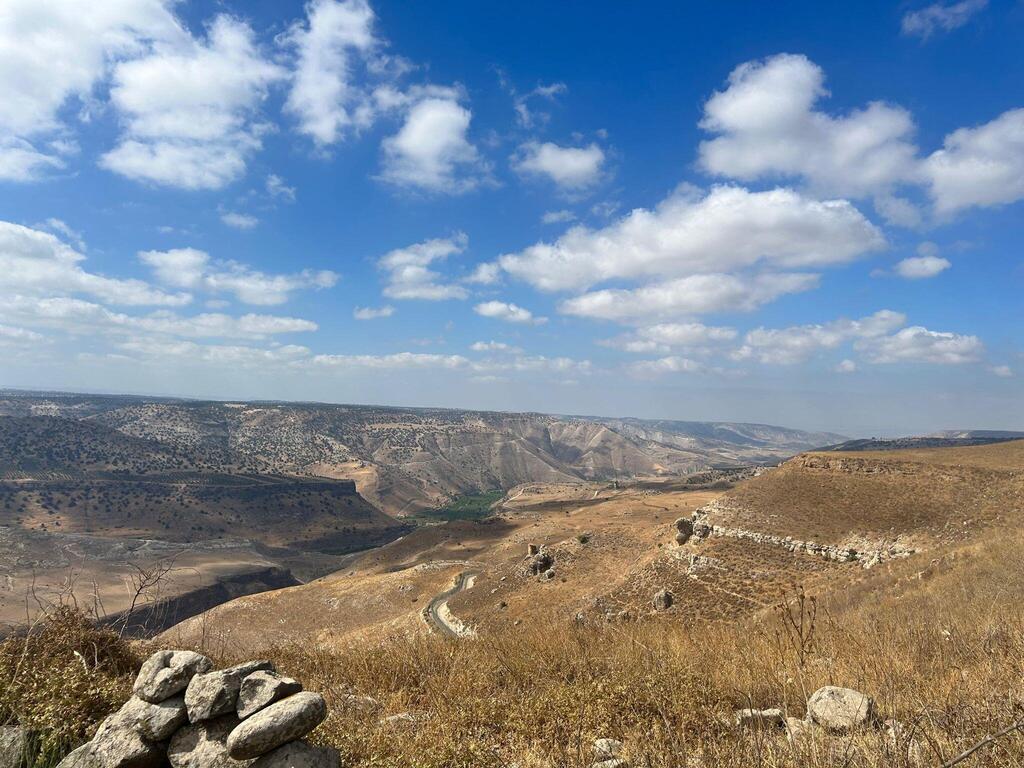Getting your Trinity Audio player ready...
A new observation point was inaugurated in the southern Golan Heights, overlooking the Israel-Syria-Jordan border triangle and the course from the Ruqqad Stream to the Yarmouk River. Situated adjacent to the ancient Yarmouk Fortress, the observation point was set up by the soldiers, along with benches and picnic tables.
Read more:
And to round things off, the brigade's commanding officer, Col. Akhsan Daksa, planted an olive tree during last weekend's opening.
4 View gallery


The ribbon-cutting ceremony at the new observation point in the Golan Heights
(Photo: IDF spokesperson unit)
Discovered in 2014 during operational work in the military zone near the Israel-Syria border, the Yarmouk Fortress was subsequently excavated by the Isael Antiquities Authority. Dating back to the third century BC, the fortress was likely established by the Greek Ptolemaic kingdom as a defense against the Seleucid kingdom or eastern tribes.
Positioned on the Golan Heights, the fortress overlooks the Ruqqad Stream, defining the eastern Golan border and running parallel to the Israel-Syria border. It also overlooks the Yarmouk River, serving as the Syria-Jordan border, and later, after meeting the Ruqqad Stream, the Israel-Jordan border.
"The new lookout will offer travelers the opportunity to approach the tri-border area and witness the impressive Yarmouk Fortress, revealed through the efforts of soldiers from the Nature Defense Force. Well-organized paths from the lookout will lead to the citadel," explained Naama Mansfeld, coordinator of the Nature Defense Forces project and director of the Golan Education and Information Center at the Nature and Parks Authority.
"Our aim is to expose nature, landscape and heritage values to both soldiers and civilians. The collaboration with the Golan Brigade serves this goal, fostering a deeper connection to nature and contributing to its preservation, as knowledge drives the protection of the Golan and its treasures."
During the observatory's inauguration, Lt. Col. Moshe Barel, the deputy commander of the brigade, highlighted the close collaboration between the 474th Brigade and key partners such as the Nature Defense Forces initiative, the Nature and Parks Authority, and the Antiquities Authority.
Together with the brigade's fighters and headquarters, they work tirelessly to unearth significant sites in the Golan Heights and ensure their preservation. Each unit takes on specific responsibilities to safeguard these sites.
"Our division remains committed to making these sites accessible to visitors, enabling them to relish the captivating scenery. Our ongoing mission is to safeguard the region's best aspects, fostering peace and security for both locals and travelers in the Golan Heights," Barel emphasized.
Under the project, unit commanders and soldiers engage in field activities within their designated areas, benefiting from guidance and expertise provided by project partners. They also receive educational and training materials focused on environmental, nature and heritage matters.
The initiative has become a crucial hub for conserving the environment, nature and heritage sites within the operational zones of participating units. Efforts are now underway to expand the project's implementation throughout the IDF, addressing both immediate challenges like the climate crisis and long-term concerns related to biological diversity.




